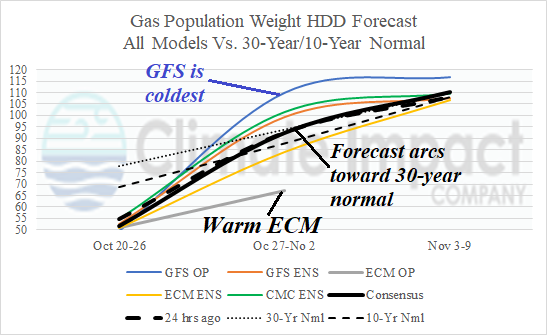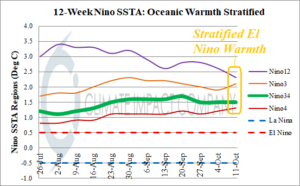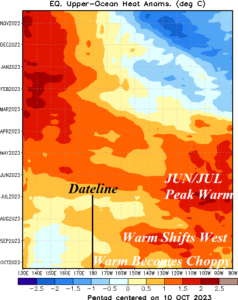
North Atlantic Upper Shear Increasing Rapidly as TC Season Begins to Fade
10/12/2023, 10:20 am EDT
U.S. Gas Population Weight HDD Forecasts Chill to Near Normal
10/20/2023, 9:18 am EDT
Fig. 1: The 12-week monitor of the Nino SSTA regions indicates a stratified and uniform warming of the eastern equatorial Pacific.
Discussion: The Nino regions sea surface temperature anomalies (SSTA) have uniform similarities developing in October largely due to the warming near the Dateline and a weaker warm anomaly off the northwest coast of South America (Fig. 1). Entering October, the multivariate ENSO index (MEI) was marginally into the El Nino climate threshold although likely strengthening as the daily southern oscillation index is steadily in an El Nino-like negative phase. Interestingly, upper ocean heat to sustain El Nino remains plentiful although weakening slightly in recent months and becoming choppy (Fig. 2). The ENSO phase forecast using the Nino34 SSTA index indicates oceanic El Nino peak during northern hemisphere meteorological winter decelerating quickly during following spring to neutral ENSO by mid-next year (Fig. 3).

Fig. 2: The upper ocean heat in the eastern equatorial Pacific has become choppy.

Fig. 3: The Nino34 SSTA forecast indicates El Nino peaks during northern hemisphere winter.
![Climate-Impact-Company-logo-sm[1]](https://climateimpactcompany.com/wp-content/uploads/2023/08/Climate-Impact-Company-logo-sm1.png)
